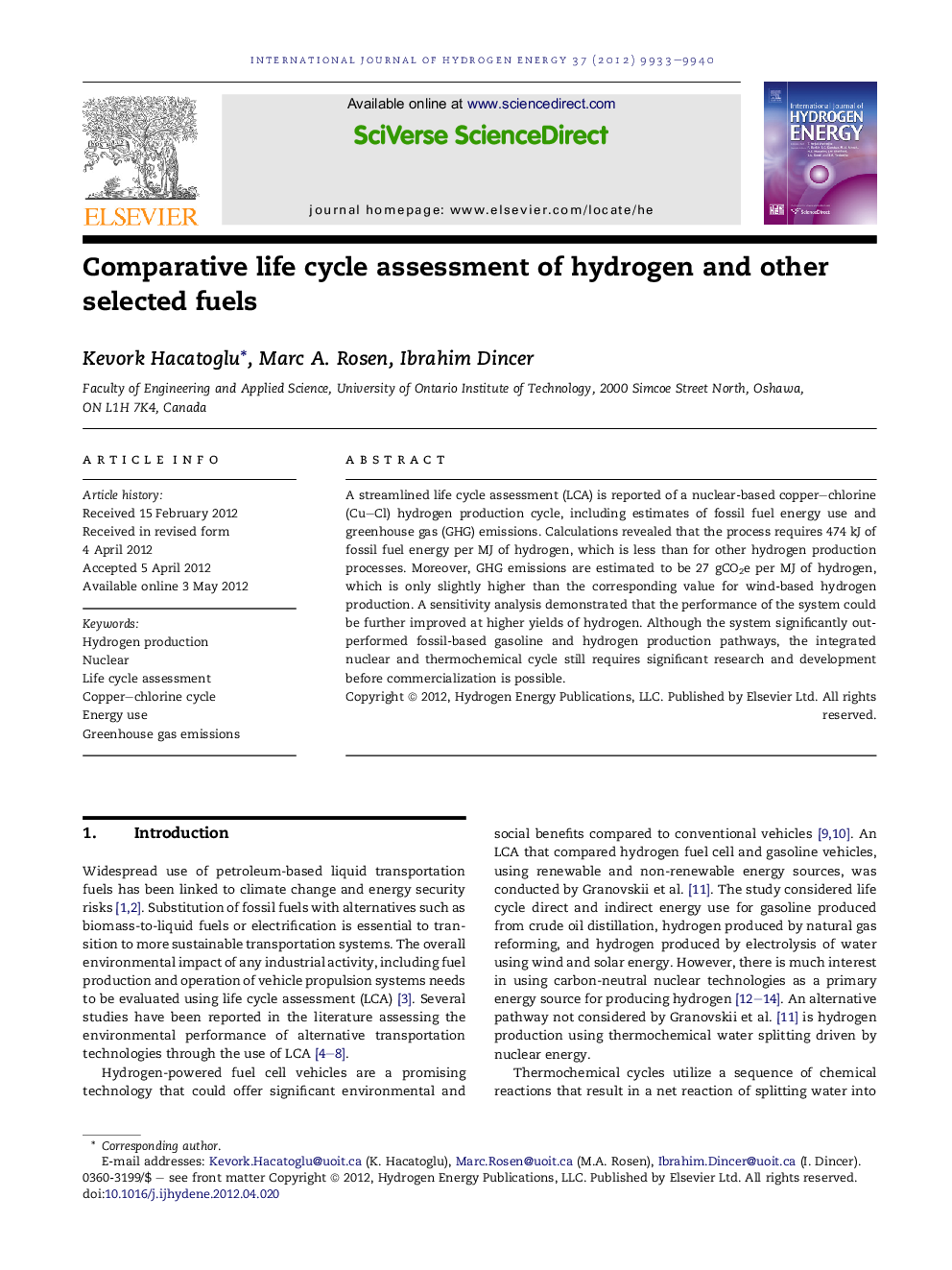| Article ID | Journal | Published Year | Pages | File Type |
|---|---|---|---|---|
| 1275175 | International Journal of Hydrogen Energy | 2012 | 8 Pages |
A streamlined life cycle assessment (LCA) is reported of a nuclear-based copper–chlorine (Cu–Cl) hydrogen production cycle, including estimates of fossil fuel energy use and greenhouse gas (GHG) emissions. Calculations revealed that the process requires 474 kJ of fossil fuel energy per MJ of hydrogen, which is less than for other hydrogen production processes. Moreover, GHG emissions are estimated to be 27 gCO2e per MJ of hydrogen, which is only slightly higher than the corresponding value for wind-based hydrogen production. A sensitivity analysis demonstrated that the performance of the system could be further improved at higher yields of hydrogen. Although the system significantly outperformed fossil-based gasoline and hydrogen production pathways, the integrated nuclear and thermochemical cycle still requires significant research and development before commercialization is possible.
► A life cycle assessment of alternative hydrogen production methods. ► Comparison of these methods through energy use and greenhouse gas emissions. ► Sensitivity analysis of these options.
